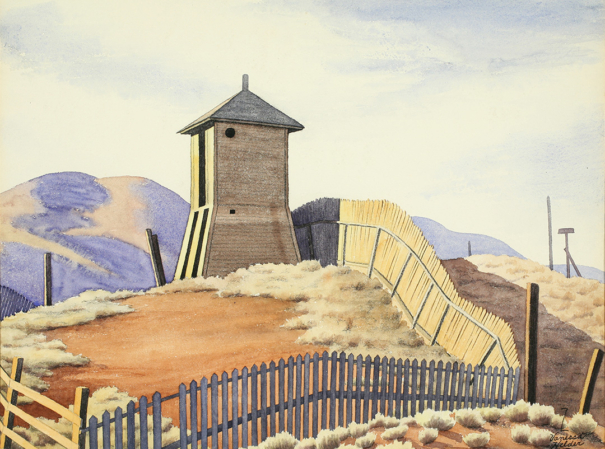
Exhibitions
This exhibition, drawn almost entirely from TAM’s own collection, demonstrates how artists in early twentieth-century America moved away from conservative European and American influences—notably the French impressionists and New York’s National Academy of Design—towards more distinctly American styles. This impetus was first led by Robert Henri, who trained in Paris in the late 1880s and who upon his return to Philadelphia began himself to teach, attracting a group of young artists (William Glackens, George Luks, Everett Shinn, and John Sloan) who were to remain an important part of his circle in future years. In 1902, Henri became the most important instructor at the New York School of Art (formerly the Chase School of Art). His numerous students included George Bellows, Stuart Davis, Edward Hopper, Rockwell Kent, Yasuo Kuniyoshi, Paul Manship, and Man Ray. He encouraged them to paint city scenes, a preoccupation that was to remain in American art through the 1940s and 1950s. In addition, following Henri’s example, many of the group, such as Bellows, Glackens, and Luks, painted portraits with highly saturated color and daring brushwork.
Henri, however, was not the only influence that led to the development of new styles in early twentieth-century America. Walt Kuhn and Arthur B. Davies were co-organizers (with Walter Pach) of the 1913 Armory Show, which brought European modernism to the attention of artists and public alike. Inspired by, or as a reaction to the Armory Show, Americans such as Thomas Hart Benton, Arthur B. Davies, Edward Hopper, Georgia O’Keeffe, and Washington’s own Beulah Hyde and Vanessa Helder, developed their own personal styles. At the same time, American Scene painters, like Thomas Hart Benton, Grant Wood, and Andrew Wyeth, tried to create a distinctly American style inspired largely by rural life, and widely seen as a rejection of abstraction.
By the 1930s these schools of American painting also included social realism and regionalism (known as American Scene collectively), as well as Precisionism (applying cubist ideas to the depiction of architectural or industrial forms). There also were a growing variety of abstractionist movements, including the American Abstract Artists and the Park Avenue Cubists. These styles caught on across the country, including in the Northwest.
Departures and Divisions: Variation in American Styles 1900 – 1950 has been organized by Tacoma Art Museum and curated by David F. Setford, Executive Director.
This exhibition is supported, in part, by Tacoma Creates, ArtsFund, Washington State Arts Commission, and the National Endowment for the Arts.
Copyright for the artwork and the photography of the artwork lies with the artist, their assigns, or the museum. Images are available to view here for educational purposes only and are not for commercial use.
Image credits: (clockwise from top) Z. Vanessa Helder. Water Tower (detail), 1939. Watercolor on paper, 17 1/2 x 22 in. (44.5 x 55.9 cm). Tacoma Art Museum. Gift of the Aloha Club in honor of Tacoma Art Museum’s 75th Anniversary. George Luks. The Immigrant (detail), circa 1904-1906. Oil on canvas, 23 3/8 x 17 1/2 in. (59.4 x 44.5 cm).
Tacoma Art Museum. Museum purchase.
